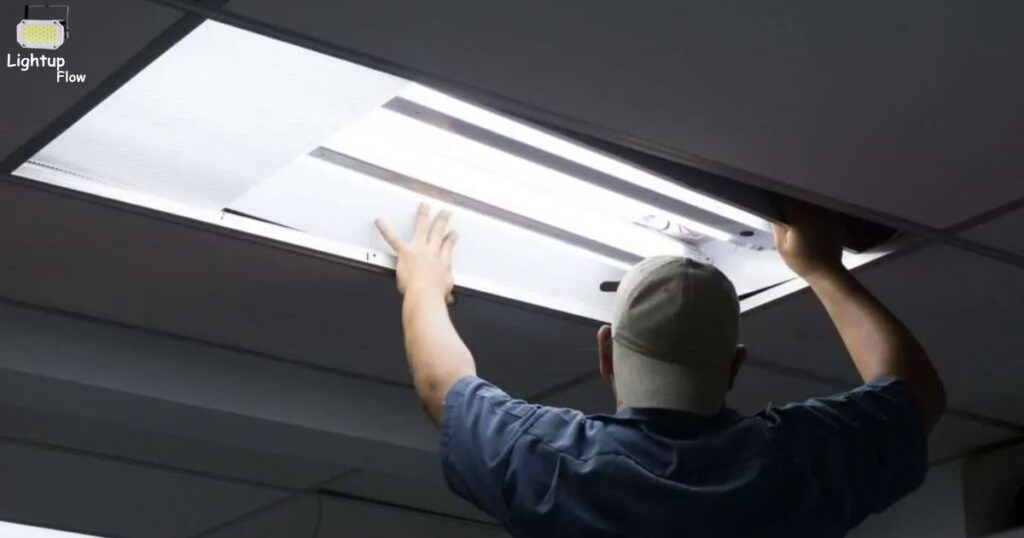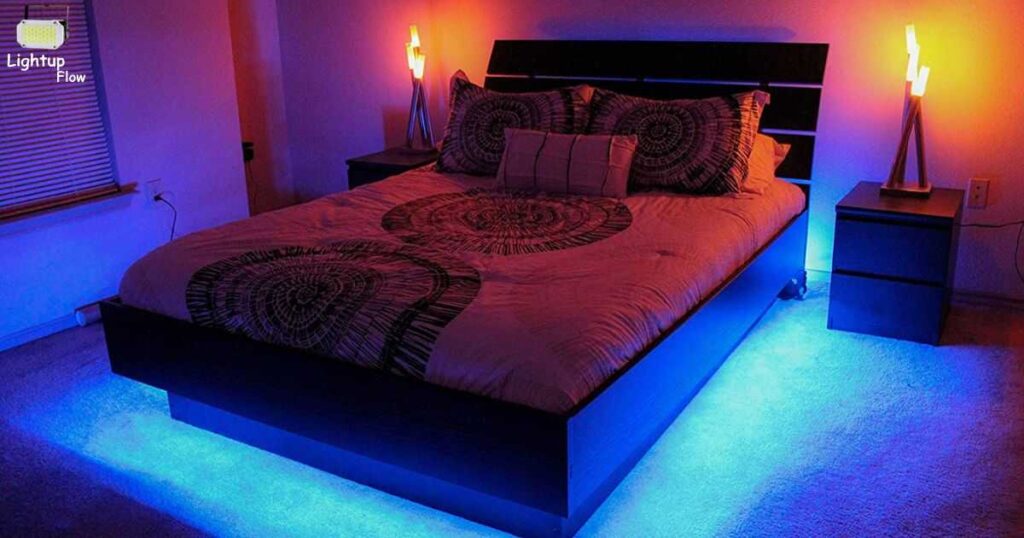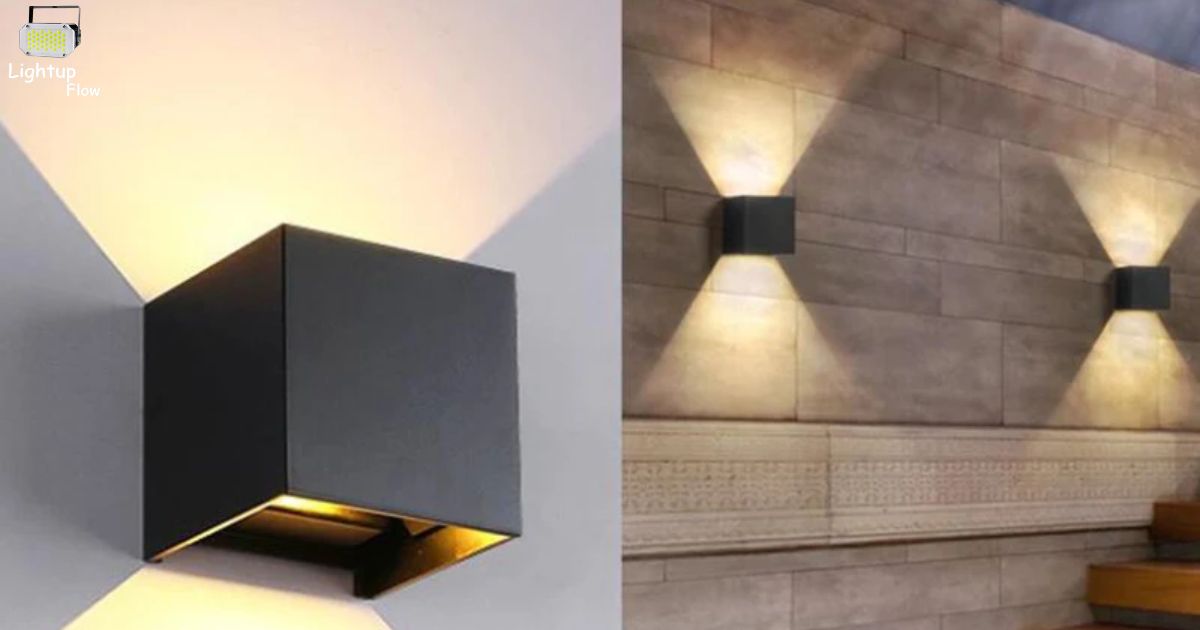LED color changing lights rely on integrated RGB chips and circuitry to blend colors. A problem within this system can prevent the lights from shifting hues as intended. Common issues involve non-responsive controls, corrupted programming, or damaged color mixing components inside the bulb/fixture.
Are your LED strip lights, bulbs, or fixtures stuck on one color with no ability to cycle through different hues? Before assuming they’re broken, it pays to diagnose why color-changing LEDs suddenly refuse to change color. The solution could be as simple as resetting or reprogramming the lights.
LED lights may fail to shift if wired incorrectly, if programming got disrupted, or if an RGB chip malfunctioned. Resetting controls by unplugging the lights for minutes then reconnecting can sometimes fix the problem. Lights may also need to be reprogrammed using manufacturer software. Damaged internal components require replacing the fixture altogether. Troubleshooting starts with the simplest solutions.
Key Takeaways
- The circuit board that handles color changing may be damaged, preventing it from sending correct signals to the LEDs.
- Wires connecting the controller to the LED strips could be disconnected internally, interrupting the flow of signals.
- Lights require a specific voltage to function; using anything higher or lower can disable color modes.
- Sometimes resetting or reprogramming the controller is needed if its internal settings have been altered or corrupted. Don’t miss to read out this topic Lights Making A High Pitched Noise.
- If individual lights have burned out, remaining ones won’t change because the circuit can no longer support all functions. Replacing bulbs may fix it.
Overview Of LED Lights Change Color

Damaged color controllers inside LED lights may prevent sending signals to cycle hues. Connections can loosen and interrupt the signal flow between circuit boards too. Using improper voltage can disable color functions outright.
Over time, programming can corrupt if it requires resets. Some bulbs expiring leaves strings without support for special modes. Methodical troubleshooting of these potential culprits aids resetting the color-changing capabilities.
Step By Step Guide To Led Lights Change Color
- Confirm correct voltage using a multimeter. Adjust or get a separate transformer if outside the operating range.
- Update firmware if accessible. Cycle power to reboot. Reset defaults to clear corrupt programming glitches.
- Remove end caps and bulbs to isolate whether colors display without attachments. Slowly reintroduce parts until issue surfaces to find faulty components.
Fix Led Lights That Are Different Colors
LED strip lights that change in hue can develop odd imperfections. Sometimes a single bulb will glow bluer or redder than neighbors, annoyingly noticeable against the even wash of color elsewhere.
To write such anomalies, isolate the rebel LED by examining continuity from output circuits. Replacing bulbs drawing excess voltage or swapping their positions manipulates signals enough to blend variances away. Harmony restores for seamless lighting scenes as envisioned.
Check The Power Supply
When lights malfunction, the first step is to check the power supply. LED, fluorescent and incandescent fixtures all rely on stable voltage to operate properly. Examine the power cord for damage, ensure tight connections and verify the power source is functioning.
Switching to another outlet or circuit breaker can rule out downstream issues. Inspect external power adapters for bulky transformers or worn prongs. A multimeter tests for proper voltage levels reaching fixtures. Isolating problems at this stage saves replacing lights unnecessarily.
Ensure The Led System Is Properly Wired

Before installing an LED system, meticulous wiring planning is key. Draw a diagram of components and intended connections to avoid errors. Inspect all joints closely – loose or crossed wires can cause flickering, flashing or prevent operation.
Continuity tests identify breaks or shorts. When powering multiple light fixtures, observe polarity on parallel runs and use appropriately rated cables to reduce voltage drop over long distances. Take time to confirm proper wiring avoids future troubleshooting headaches.
Fix Led Light That Won’t Turn On
A dead LED light could be caused by multiple issues. Check for power at the source and test with another fixture to narrow the problem. Inspect along wire routes for cuts or loose connections preventing current.
Gently probe solder joints for cracks or use a multimeter to test for breaks in circuits to lights. Clean external surfaces from dust and wipe internal boards free of debris. Reseating components sometimes revives lights in need of a simple reset. Don’t toss it yet – persistence finds solutions.
My Led Lights Turn Green And Red
Changing LED colors can indicate electrical faults. Test with another power source to isolate if the strip or driver is at fault. Drivers may be overloaded or overheating, dimming or flickering from insufficient voltage along long cable runs.
Check power supplies handle voltage fluctuations. Component fatigue from vigorous vibration results in telltale reddish or greenish hues. Replace damaged sections or reinforce mountings to restore solid light emission.
Are My LED Lights Stuck On One Colour

When LED lights refuse to change colours, the issue could originate from beyond the bulbs themselves. Faulty wiring preventing clean signal delivery can truncate the spectrum. Inspect connections for signs of corrosion or wear, ensuring wires aren’t pinched.
Control boxes containing chips tasked with blending hues may need cleaning or code resets if gummed up. Likewise, update any lighting programs that direct sequences. Seeing where blocks arise points to targeted remedies.
The Color Not Working On My Led Strip
LED strip lighting relies on integrated circuits to switch between hues. If a shade inexplicably washes out along a segment, poor soldering or physical damage stresses delicate connections. Tracing back from unaffected spots locates defective areas quickly.
Gentle manipulation of pinheaded points beneath inspection eases breaks bringing relief. Replacing clipped sections cures persistent pigment prejudice, restoring radiant rainbows throughout seamlessly once more.
FAQ’s
Why Wont My Led Lights Switch Colors?
The controller box that powers the LED strip may have failed, preventing new color signals from being sent. Checking the power and connections to the controller is a good first step.
How Do You Make Led Lights Change Colors?
Many LED lights use remote controls to cycle through colors. Check batteries and resync if needed. Some have buttons to hold for combinations switching among pre-set palettes.
Why Are My Led Lights Stuck On White?
The driver board that regulates color switching may be flawed, only sending white channel signals. Replacement usually restores full spectrum to LED strips again.
Why Are My Led Lights Stuck On Blue?
The red channel on the controller may have failed, leaving blue as the strongest color perceived. Bypassing that section or upgrading to a new controller returns a full color palette.
Conclusion
There are several potential reasons why LED lights may get stuck on one color instead of changing as intended. Common issues involve failures of the controller board, power supply, or wiring connections that prevent new color signals from being sent or recognized properly, Led Lights Change Color.
Taking a methodical approach to testing each component and looking for any damage or points of failure can help pinpoint the root cause. With diagnosis, appropriate parts may then be replaced to restore the full colour-changing functionality of the lights.








